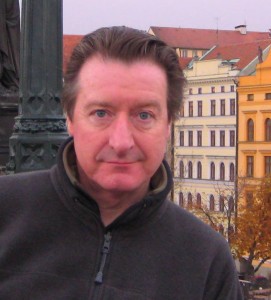
mindfulness, attention and are your emotions really real?
“you are much more in the driving seat than you might think. You predict, construct and act. You are an architect of your experience”
-Lisa Feldman Barrett How Emotions Are Made
In his erudite and powerful book Deep Work, Cal Newport offers an account of Winifred Gallagher’s experience of her cancer and its treatment path. She in turn writes about how “the disease wanted to monopolise my attention, but as much as possible I would focus on my life instead.” Gallagher came to the conclusion, a conclusion shared my many who practice mindfulness, that “the skilful management of attention is the sine qua non of the good life and the key to improving virtually every aspect of your experience” and “who you are, what you think, feel, and do, what you love-is the sum of what you focus on.”
In other words, what we pay attention to constructs our world and is who we are.
In mindfulness, this power of attention-sometimes called focus or awareness-stands at the heart of the practice. Why? Because a significant amount of our lives are bound up in the opposite of being attentive and aware; we’re caught up in distraction and our unconsciously and automatically piloted behaviours. This is prevalent in our thinking, and perhaps most prevalent in our emotional life. It is in our emotional domain where we can get caught up in and be effectively sabotaged by a whole cascade of unprocessed feelings-bad, sad, and mad being the basics-that rob us of our awareness and present moment attention and equanimity.
In her ground-breaking book How Emotions Are Made the psychologist and neuroscientists Lisa Feldman Barrett contends that our emotions are not “facts” or “objects in here” (i.e. the brain) but rather the inevitable result of our brain’s drive to predict, categorise and make sense of our experience. Emotions are not pre-programmed but derive from our upbringing, personal history and the various contexts we find ourselves in. Thus, what we are embedded within we emotionally embody: our emotions are social constructs and by our emotions we construct and in turn re-construct our worlds (and our future) through these habits of neurological prediction and categorisation. Barrett suggests that instead of asking ourselves how real our emotions are, we would be better placed to ask ourselves how we came to perceive our emotions as real.
Barrett points out that we like to consider ourselves as rational creatures, citing the classic evolutionary model of the triune brain (human on a horse on a reptile) but says that in truth our rationality is very much what she calls a “bounded rationality” (I wondered what she might make of Ken Wilber’s claim that up to 65% of the planet’s human population is at a pre-rational stage of development). She further contends that our emotions are dynamically linked to our bodily sensations. When we experience an emotion, it impacts on what Barrett calls our “body budget” and writes “you cannot overcome emotion through rational thinking, because the state of your body budget is the basis for every thought and perception you have.” Here Barrett disputes the triune brain system that has been popular for decades, presenting us with a more complex and systemic map of how the brain works. In essence, Barrett makes a seamless link between emotions and the budget a body has to offer in terms of its energetic resources.
The interdependence of thoughts-emotions-bodily sensations and the practice of bringing attention and awareness to these domains has been for some time integral to the practice of mindfulness. If, as Barrett contends, we construct our worlds emotionally via our attention, wouldn’t it be good practice to hone our “attention muscle”?
This is what mindfulness does. In his (now famous) definition of mindfulness Jon Kabat-Zinn calls mindfulness “paying attention in a particular way; on purpose, in the present moment and nonjudgmentally”. Here we can see how highlighted intentionality is in mindfulness practice in the phrase “on purpose” and how important our attitude is in the whole process. Attitude is the other-wing-on-the-bird to attention; attitude and bringing awareness and attention to the emotions.
When non-judgmental attention is taken to our emotional repertoire we can become less caught up in them, as we are less inclined to “Velcro” to a palette of emotions with few colours; we begin to extend the shades, hues, tints and tones of our emotional repertoire, even perhaps learning new emotions and integrating them into our palette, such as exploring “tocka” the Russian for spiritual anguish or “voopret” the Dutch for the pleasure you feel about an event before you attend the event. Extending our emotional range is this way can result in a lowering of what is often called our emotional hijacking. This being so, we are less likely to be caught up in, or fused to a net of hasty and unconscious emotions that create and sustaining a reactive self.
We can, therefore, live our lives with more mindful equanimity, response and choice-and in turn chose a better emotional world to live in, for a wider, more elegant system and repertoire of constructed emotions is literally a better constructed world.





Write a Comment